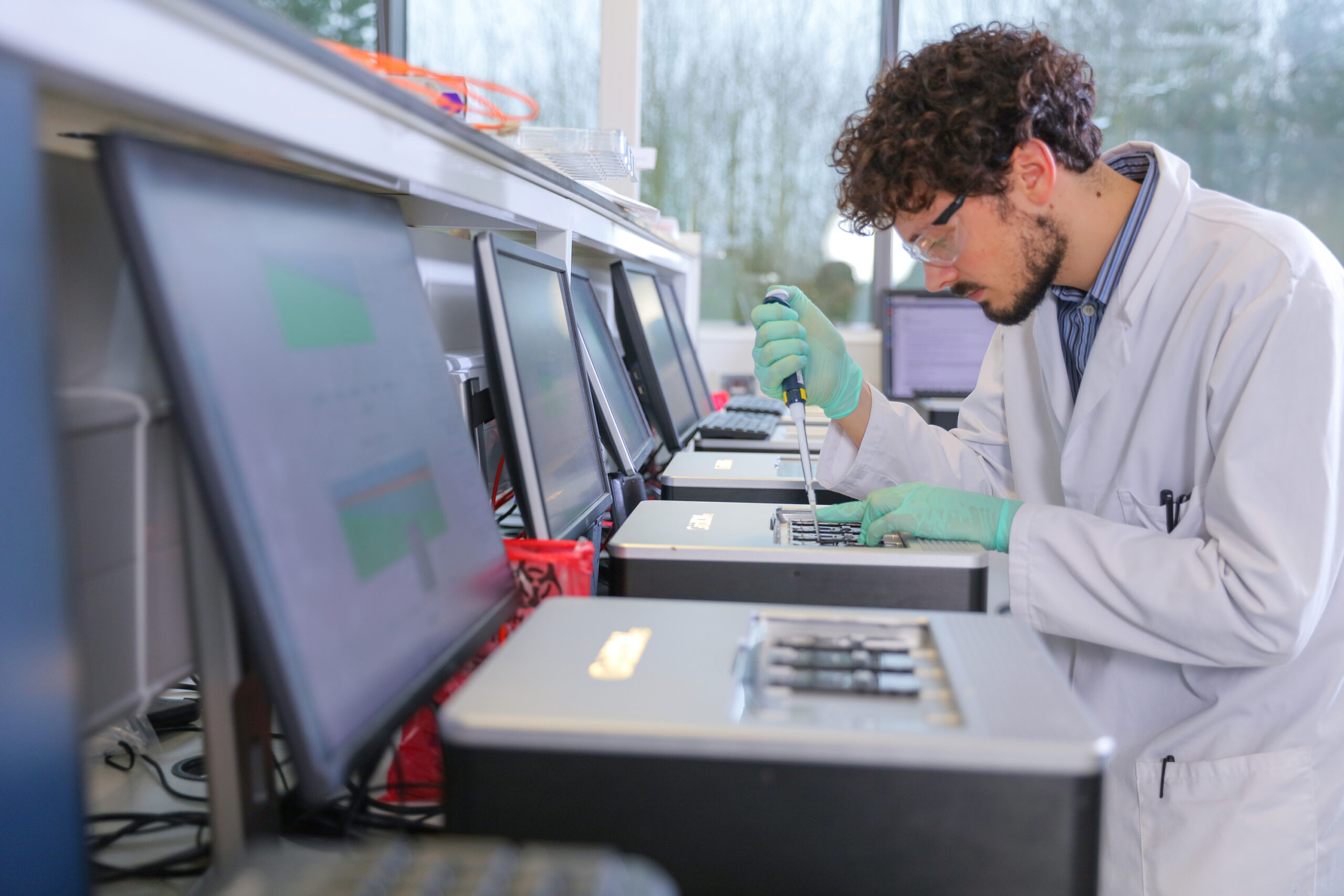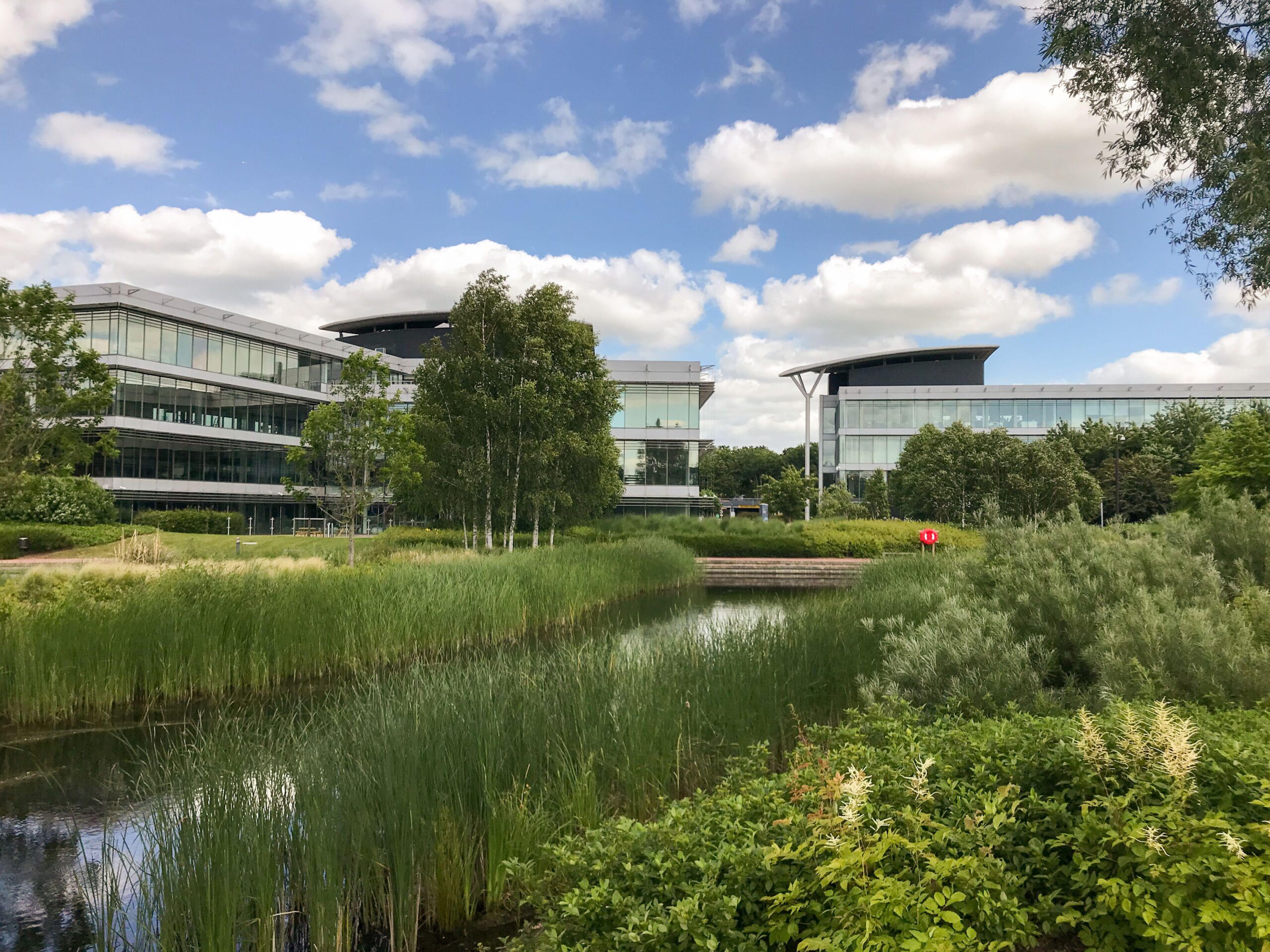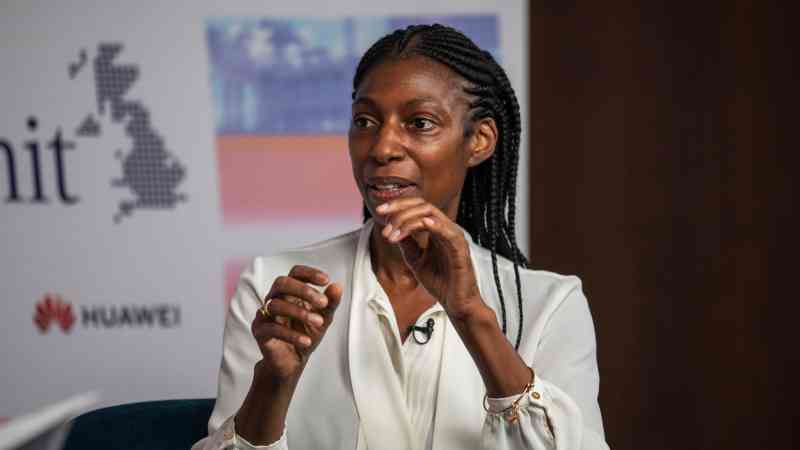Gordon Sanghera: ‘I thought I’d have the tenure of a Premier League manager’
Not far from the staff canteen of Oxford Nanopore Technologies’ global headquarters in the city’s science park where we meet for lunch are large images of pop stars.
The likes of Bowie, Blondie and the Kinks on the walls are to inspire staff about how the gene sequencing company, like their music, has had a “disruptive” effect on the status quo.
Over slow-roasted pork belly, five-spice roasted new potatoes and garlic and soy green beans, Gordon Sanghera, the company’s co-founder, enjoys explaining the personal passions that have shaped the company he has built from a University of Oxford spin-out almost 20 years ago and which had a £3.4 billion float in 2021.
As well as its annual London Calling punk rock-inspired customer conferences, there is football. The sport Sanghera, 63, loves most has played a defining role in his entrepreneurial life and the growth of an international business, employing about 1,400 people with customers in more than 120 countries.
Football, which he played for Cardiff University and into his forties, “saved” him as a young man growing up in 1960s Swindon.
Outside a challenging upbringing in his “packed” Punjabi grandparents’ three-bedroom house — with four aunts, his sister and two brothers — lurked wayward youths sticking fireworks in letterboxes and the difficulties of a largely-white comprehensive school.
“Football was where you went to,” he says, as we eat in a quiet side room beside the noisy canteen. The sport has remained a guide ever since and is how Sanghera, a Tottenham Hotspur season-ticket holder, explains Oxford Nanopore and its future.
“I thought I’d have the tenure of a Premier League football manager. If you look at start-ups … it’s almost like you take an unfashionable team, you get them out of division two, into division one, and then in the Premier League you get fired and bring somebody else in.”

Rather than running Oxford Nanopore for just three or four years, though, next year it will have been 20 since Sanghera spun it out, seeded by Beeson Gregory, now IP Group, the FTSE 250 company, where Spike Willcocks, a co-founder of Oxford Nanopore and still its chief strategy officer, worked.
Arriving in 1987 in Oxford for a post-doctoral research position in inorganic chemistry, after a PhD in bioelectronics at Cardiff, Sanghera met Allen Hill, a paternal professor, and became immersed in the university’s fledgling commercial networks through its technology transfer department.
He spent 14 years rising up MediSense, an Oxford spin-out that delivered a new glucose technology to the market, including time in Boston after it was bought by Abbott Laboratories, the multinational.
In 2004 Sanghera returned to Oxford, where he met Hagan Bayley, professor of chemical biology at the university, and they set up a venture which became Oxford Nanopore and initially operated from a “derelict lab”.
The company has gone on to develop devices, including handheld ones, used to sequence DNA and RNA. They work by monitoring changes to an electrical current as nucleic acids are passed through a protein “nanopore”. The resulting signal is decoded to provide the specific sequence.
“This platform has the potential, I’ll emphasise that, to be as ubiquitous as a telescope or a microscope,” he says. “Telescopes and microscopes started in science. And that’s where we are.”
The company’s devices are mainly used by researchers in the life-sciences sector, such as at academic institutes, and generated 70 per cent of its £84.1 million first-half revenues, announced last week.
Establishing Oxford Nanopore in research markets has taken a decade. It has featured in about 12,500 published research papers, providing a “beachhead” for the company. But increasingly they are being adopted in industrial, clinical and biopharmaceutical fields. “The ultimate endgame is to enable the analysis of anything by anyone, anywhere,” Sanghera says.
The sequencing technology has the potential, he believes, to provide insights in food and agriculture and, longer term, to enter the consumer health and wellness markets, offering personalised exercise regimes and diets.

To get this far, Oxford Nanopore has had to overcome “so much negativity”: doubts that it could commercialise the tech, scale a business or compete with America.
“If you’re not American, Americans can’t possibly think that the UK could develop something. They definitely believe the UK can innovate but they can’t deliver a mature platform. So you get that from a customer perception. Investors in the UK, I’m going to be careful what I say here, are just not used to such a play. It has taken us 20 years and a billion pounds of cash to get here. That’s highly unusual for the UK.”
He is frustrated by the lack of ambition in Britain. “I really just don’t understand why. But there is also just the tall poppy syndrome thing … you know, big them up and then knock them down.”
Sanghera says a lot of people think: “‘If our tech is as good as I say it is, or we say it is, then why haven’t the Americans bought us?’” The answer: “Because we’re not for sale.”
It all means that the company clearly focused on the “next significant milestone”, becoming profitable. In March, Oxford Nanopore delayed its break-even target on an adjusted earnings basis by a year to the end of 2027.
Sanghera talks down the significance, saying it was a necessary reaction to “market conditions”. He says: “There’s been a real slowdown post-Covid in funding for research markets and there’s not a lot you can do about that … you can’t save your way to greatness. You have to get that balance right.”
The shares were held back by doubts over its financial forecasts, extending declines since a blockbuster float. The listing was priced at 425p a share and the company was valued at £4.8 billion after a surge on its debut. The stock peaked at 716p in December 2021 but traded below 87p in June.
“We’ve been a public company in probably the three worst years for over 100 years for a tech company which is on a path to profitability. But we did get lucky because we put a good amount of cash in the bank.”
Last month Oxford Nanopore raised another £80 million, including £50 million from new investor Novo Holdings — the controlling shareholder of Novo Nordisk, the Danish company behind the weight-loss jab Wegovy — through a placing priced at 120p per share.
Sanghera says the company “didn’t need the cash” but having a long-term strategic investor and biopharma specialist is important in connecting it “with the right companies in their portfolio”.
Reforms by the Financial Conduct Authority designed to make London a more attractive listing destination, also mean that the company is set to join the FTSE 250 mid-cap index.
A share structure introduced at the time of the float, whereby Sanghera was handed a so-called limited anti-takeover share, giving him rights for three years to block hostile takeover approaches, meant it was ineligible for a premium listing, preventing it from joining the FTSE indices.
Inclusion will bring “much-needed liquidity” to its shares, he thinks, and while the anti-takeover share is due to lapse next month, potentially leaving Oxford Nanopore in play, he’s relaxed.
“It certainly is interesting … if somebody came in and made an offer and it was a premium that shows that maybe the share price is wrong.”
His vision, though, remains delivering a “profitable tech company that people look at as the poster child of how this country should take the phenomenal IP [intellectual property] that it has, where it punches way above its weight … and turns it into global players who bring back value to this country”.
There will come a time when he is ready, in his football vernacular, to hang his boots up, but he says: “I haven’t reached my limit yet.”
Sanghera wants to bow out “on my own terms” and then to do more to support a “brilliant charity” called Football Beyond Borders, an education and social inclusion initiative using the power of football to change the lives of young people.
Football got Sanghera “out of the mess he was in” and he wants it to enable a future for others too.
CV
Age: 63
Education: Cardiff University, chemistry; Cardiff University, PhD, bioelectronics
Career: 1987-1989: University of Oxford, post-doctoral research associate; 1989-2004: Abbott Diabetes Care; 2004-present: Oxford Nanopore Technologies
Family: married, one daughter
Receipt
2 x slow-roasted pork belly, five-spice roasted new potatoes and garlic and soy green beans £7.50
2 x bottles of still water £2.50




Post Comment